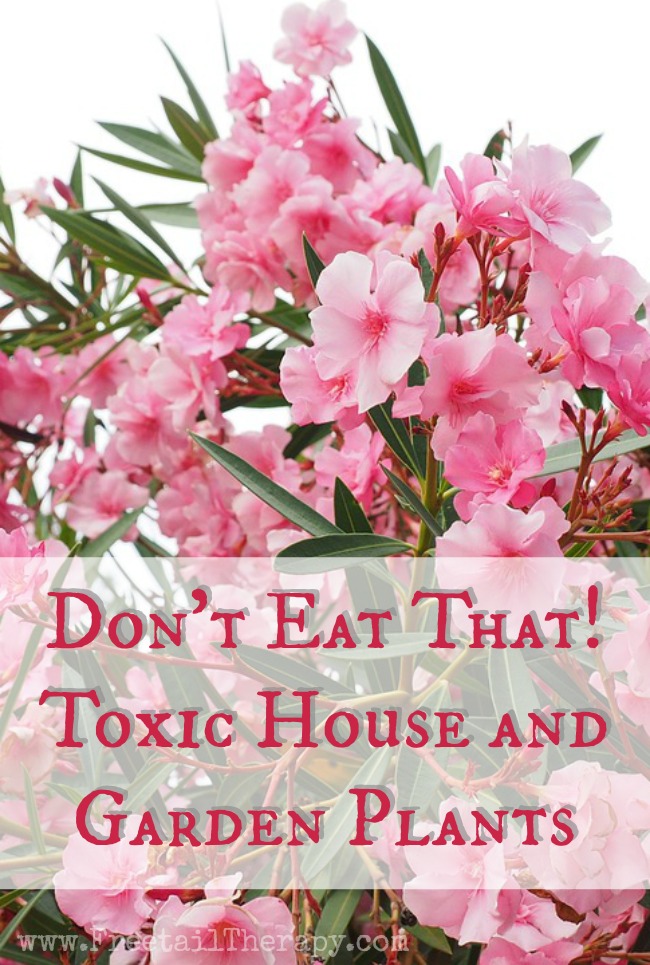Don’t Eat That! Toxic House and Garden Plants

For those with pets and young children, knowing what plants are toxic – indoors and out – is very important. It’s also important for anyone who gardens or eats foods harvested from their yard or the wild. Here is a basic list of some toxic house and garden plants to be aware of.
Humans
First, let’s look at plants that are toxic to people. Young children are more vulnerable to poisoning from plants, and not just because they tend to put things in their mouths – children’s smaller size makes them more susceptible to poisoning.
Oleander (Nerium oleander)
This lovely flowering shrub is deadly for children and toxic to adults (the amount that sickens an adult could kill a child). It’s a Mediterranean native, so it’s grown outdoors in warm climates and indoors in cool ones. Its seeds are a well-known poison in India. Ingesting any part of this shrub is potentially deadly; all parts of this shrub should be avoided. It causes nausea and vomiting, seizures, and coma.
Monkshood/Wolfsbane (Aconitum napellus)
This pretty purple garden flower produces its hood – or helmet-shaped flowers in long spikes. Its lovely looks mask a deadly plant, though. Monkshood causes a burning sensation in the bowels and in the mouth, and also numbness in the mouth. This is followed by a drop in heart rate and a decrease in circulating oxygen. Cardiac problems can also occur just from touching this plant.
Lily of the Valley (Convalleria)
Dangerous if ingested or handled, Lily of the Valley affects the heart. It contains chemicals that can cause the heart rate to increase to dangerous levels.
Schefflera (Schefflera actinophylla)
This popular office plant is said to clean the air. But ingesting it can cause kidney failure. It secretes a resin that may find its way to the floor, making is especially dangerous for crawling babies and floor-licking dogs.
Speaking of dogs…
Pets
All of the above plants are also toxic to pets, but following is a list of some plants that are a particular threat to pets because they tend to eat them. (The above plants are not usually favorites among pets.) The following plants are also poisonous to people.
Sago Palm (Cycas revoluta)
Many palms are toxic, but this popular palm is especially so to pets. Sources say that two-thirds of pets that ingest sago palm will die.
Easter Lilies (Lilium longiflorum)
These pretty seasonal plants are found indoors and out, depending on your area. Cats are especially prone to chewing and eating the grass-like leaves of these lilies, with toxic results.
There are many more house and garden plants that can do harm to your family and pets. Make sure you do your research before adding a new plant to your garden or home.



